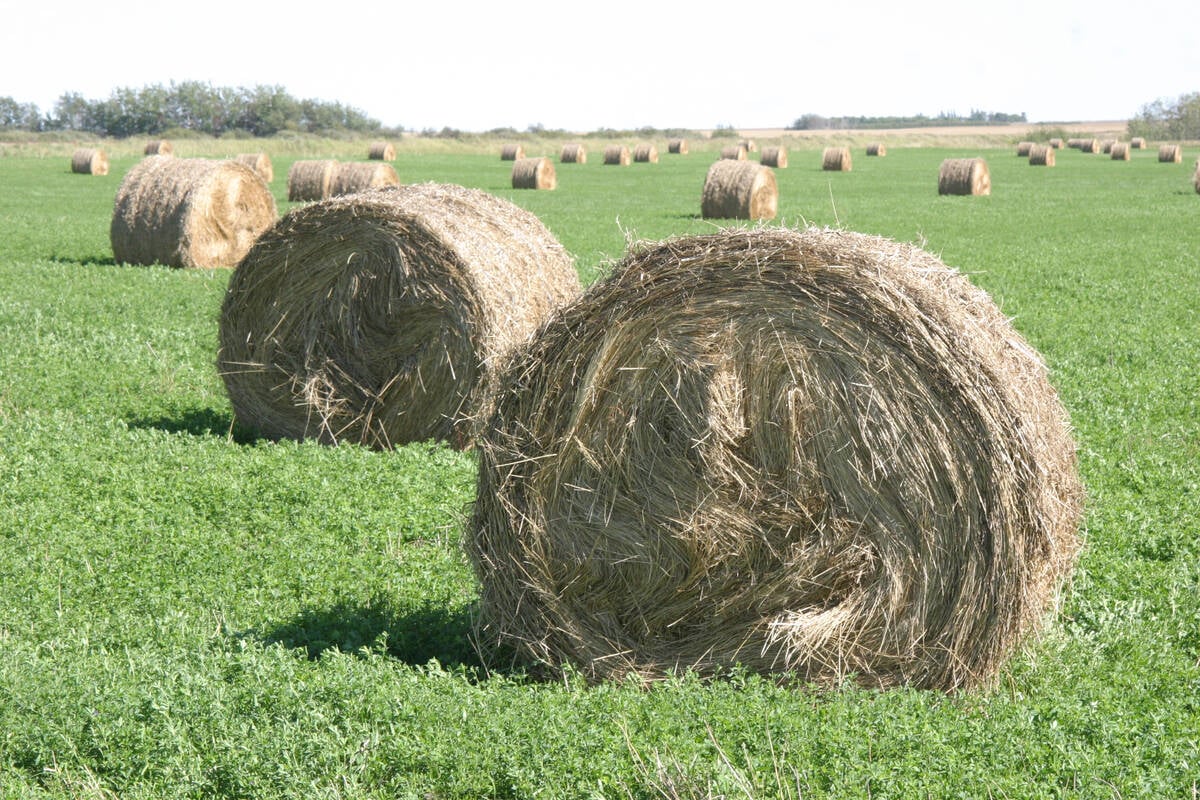AIRDRIE, Alta. – Fifty years ago if a Grade 6 teacher told her students they were going to visit a farm and pitch bales, feed pigs or check a field for weeds, the entire class would have played hookey.
But that’s not the case today, with the majority of Canadian schoolchildren three generations removed from the farm.
That distance from farm life and food production is why Alberta Agriculture has joined with Alberta Wheat Pool, DowElanco and the Canadian Grain Commission to give young city slickers a look at a real working farm.
Read Also

Breaking down successful winter feeding into six steps
It’s that time of year when it is important to start planning for a cow herd’s winter feeding program. Here are six steps I think are necessary to consider when getting your feed tested.
Recently, more than 1,000 children in Grades 4-6 from Calgary and Airdrie were bused to a 40-acre site north of Calgary to experience the real thing on a permanent outdoor classroom called the City Slickers Harvest.
The classroom is part of a quarter section owned by the Airdrie Agricultural Society. Harvests were donated Oct. 7 to the Canadian Foodgrains Bank and the Calgary Inter-Faith Food Bank.
The area is divided into stations so children can study weeds, learn about water, explore the environmental impact of farming and see farm animals in a normal setting. There are three nearby farm sites open to visitors to show a working horse ranch, beef operation and hog farm.
For a generation whose vocabulary is punctuated with an elongated “cool” over everything they see, this was indeed a cool experience.
“The kids will never forget this day,” said Ed Palmer, of Alberta Pool.
Palmer spent his day showing enthralled young people how weed seeds bore into the ground and how an elevator worker sifts through a grain sample to remove weeds, broken kernels and grasshopper legs.
Children and their teachers were herded out to a weed-infested pea field, given manuals and told to find and identify five different weeds. After some floundering in waist-high wild oats, children were soon calling out, “I found a Canadian thistle. Now we need a stinkweed.”
The City Slickers program started this year as an outdoor agriculture in the classroom program for urban children.
There they can smell and haul hay bales, run their hands through grains and oilseed samples, as well as see the connection between everyday food products and grains.
“By taking the students to the farm site outside the classroom we are getting them involved first-hand with agriculture. This will give them a deeper understanding and appreciation for this important industry,” said Betty Gabert. She co-ordinates Alberta Agriculture’s ag in the classroom programs and was mainly responsible for getting this classroom started.
In addition to the 1,000 young visitors, Australian ministry of agriculture representative Geoff McFarlane was an observer hoping to start something similar in his country because farmers are losing their identity in that largely urban population as well.
“Farmers have to take the time to show people how food is produced,” he said.















